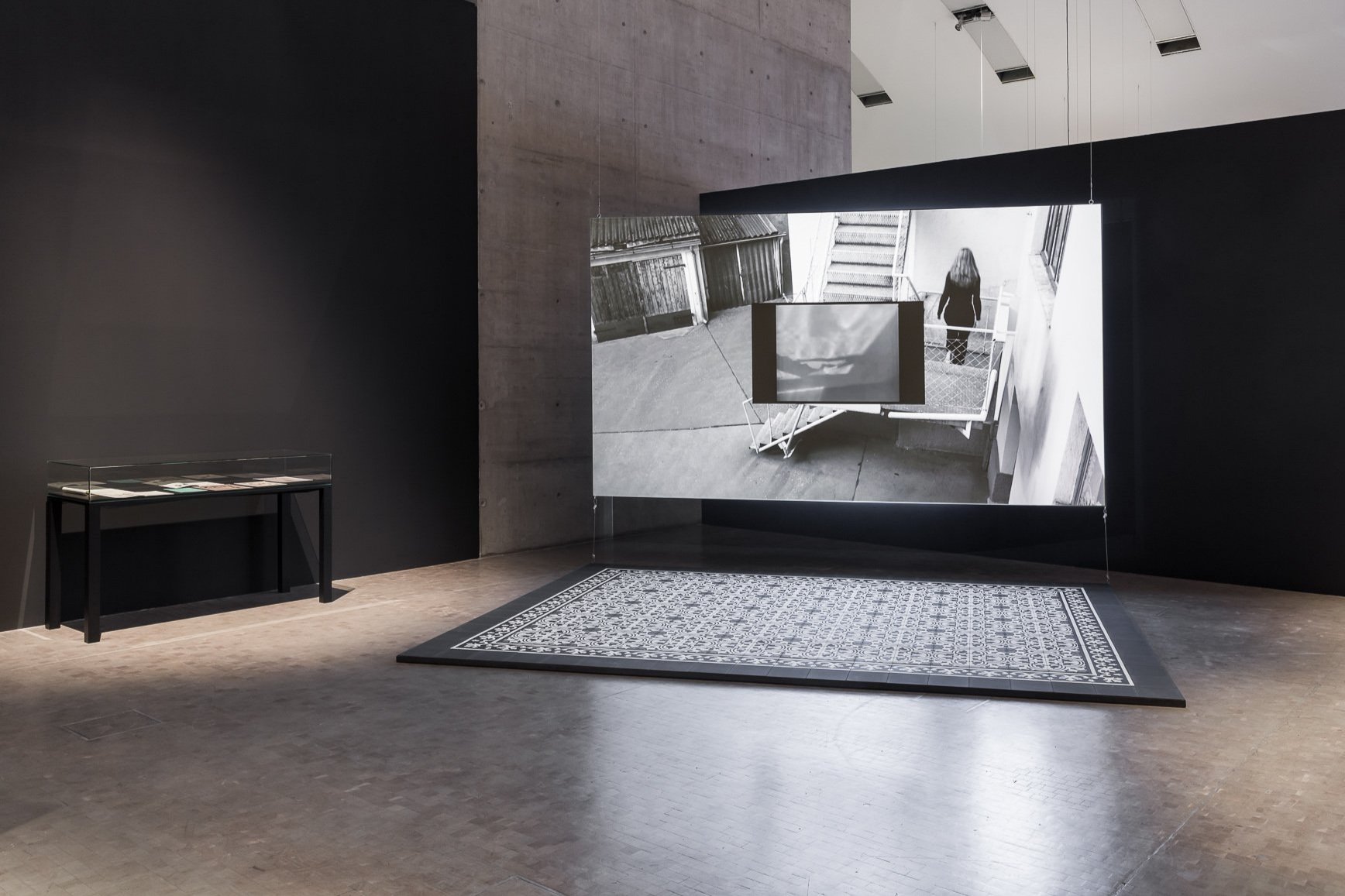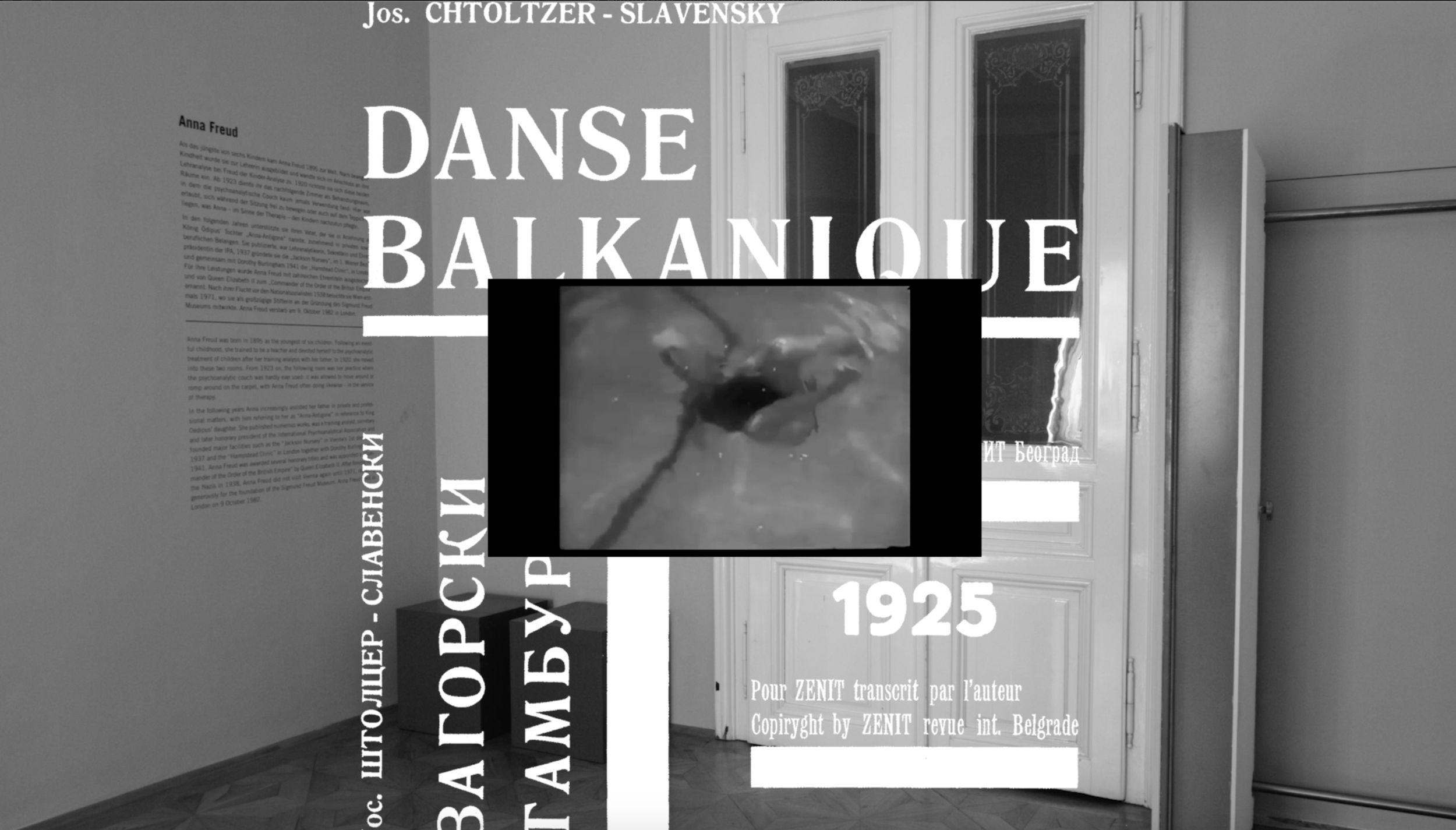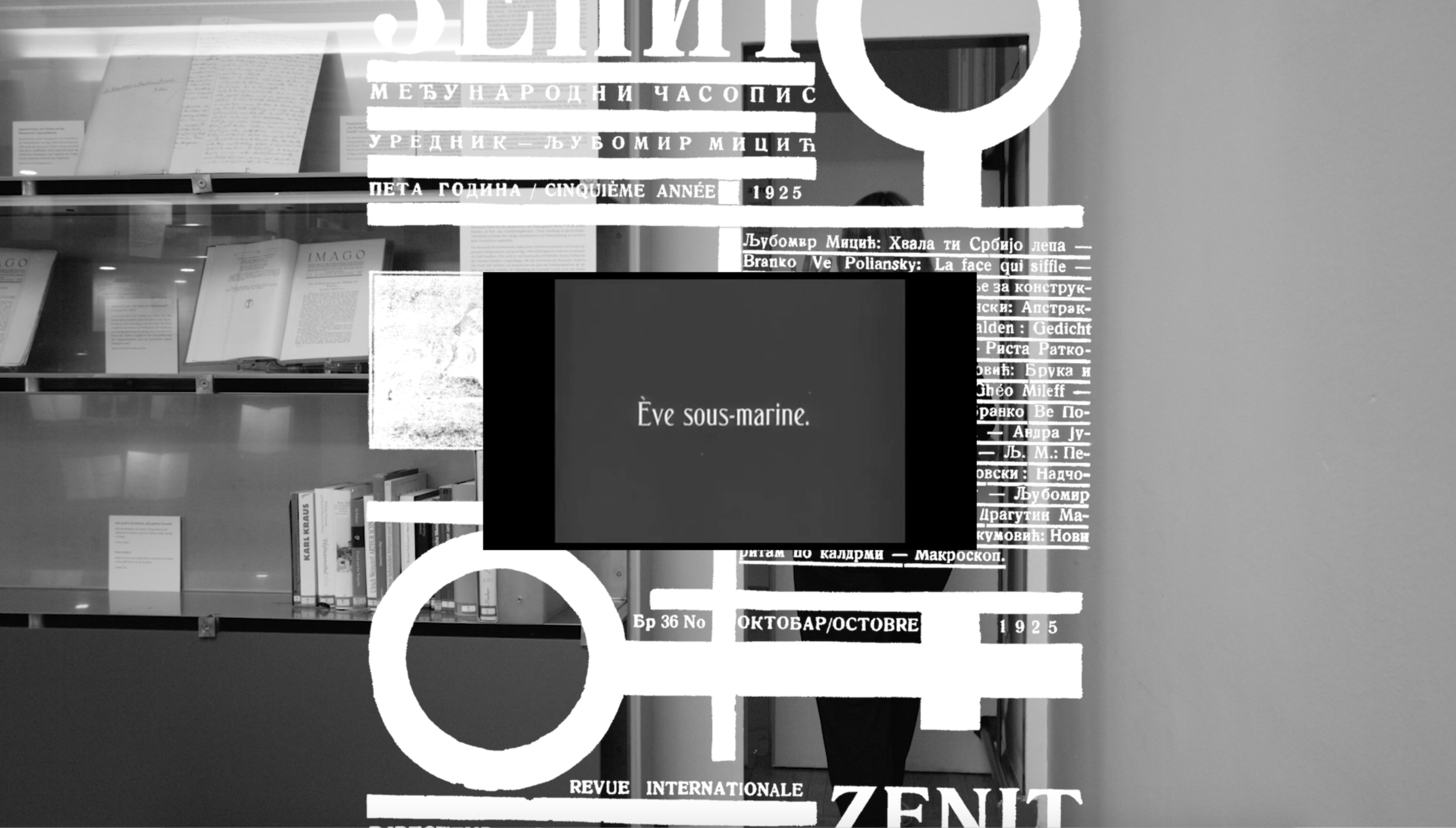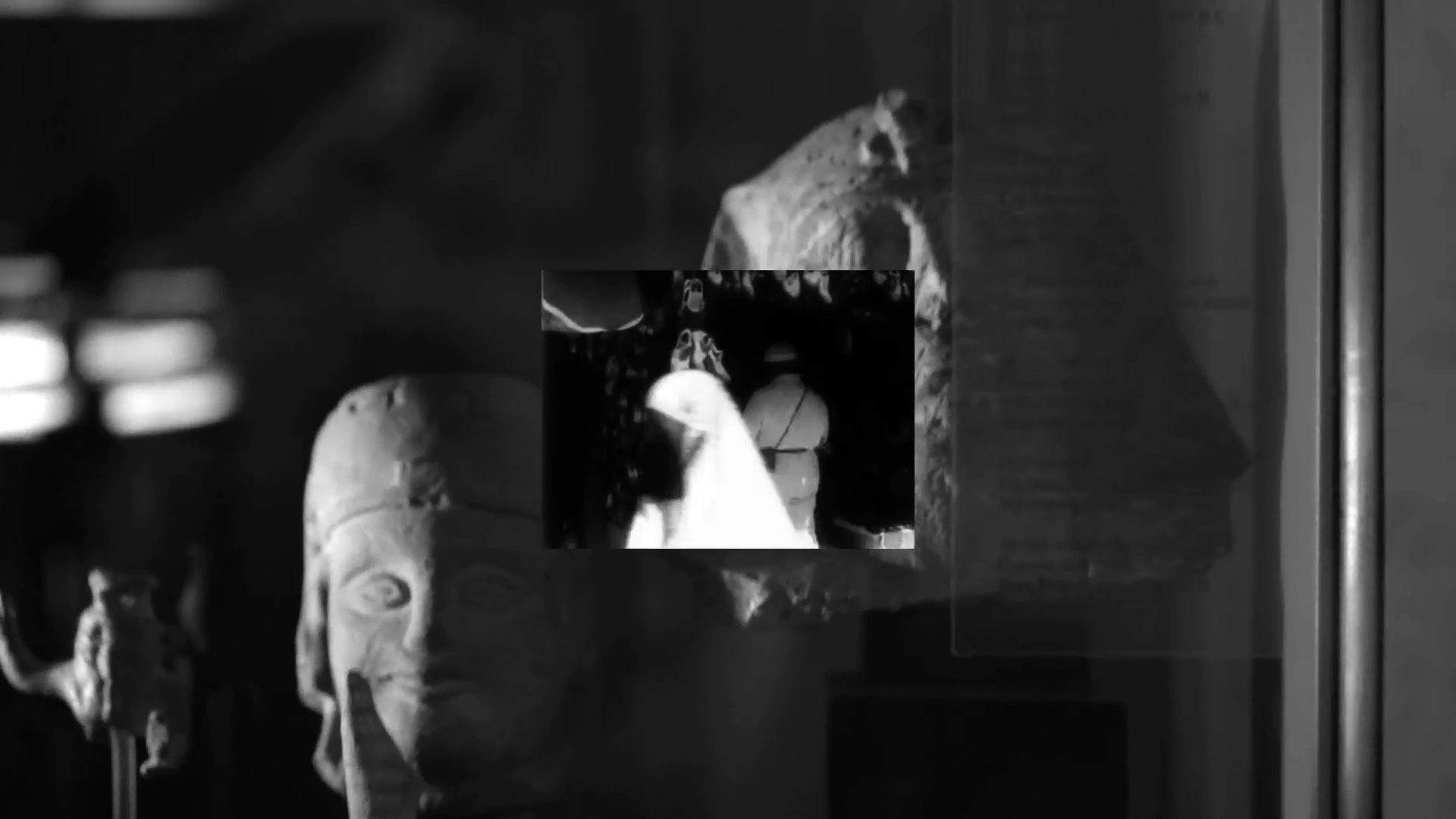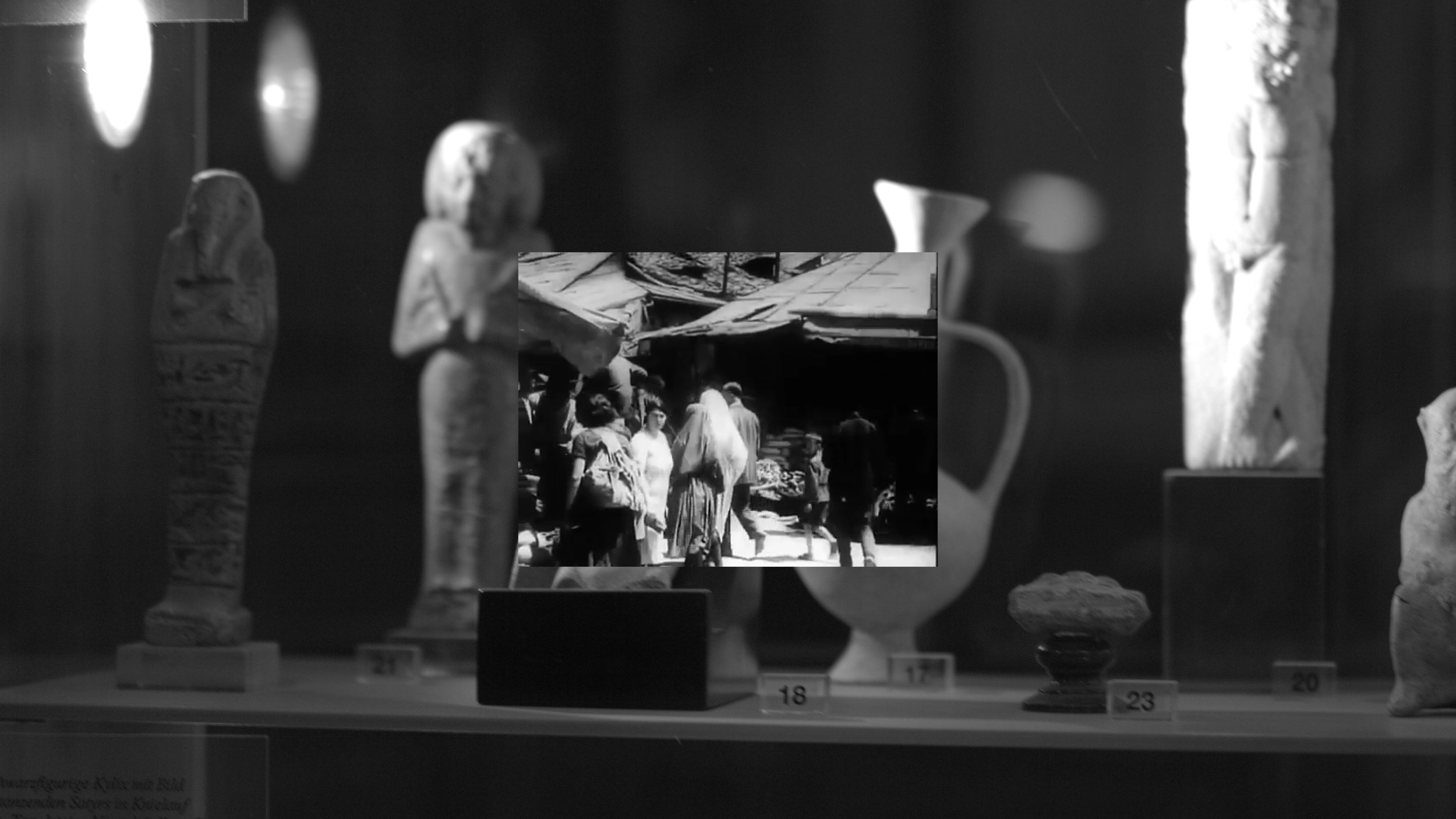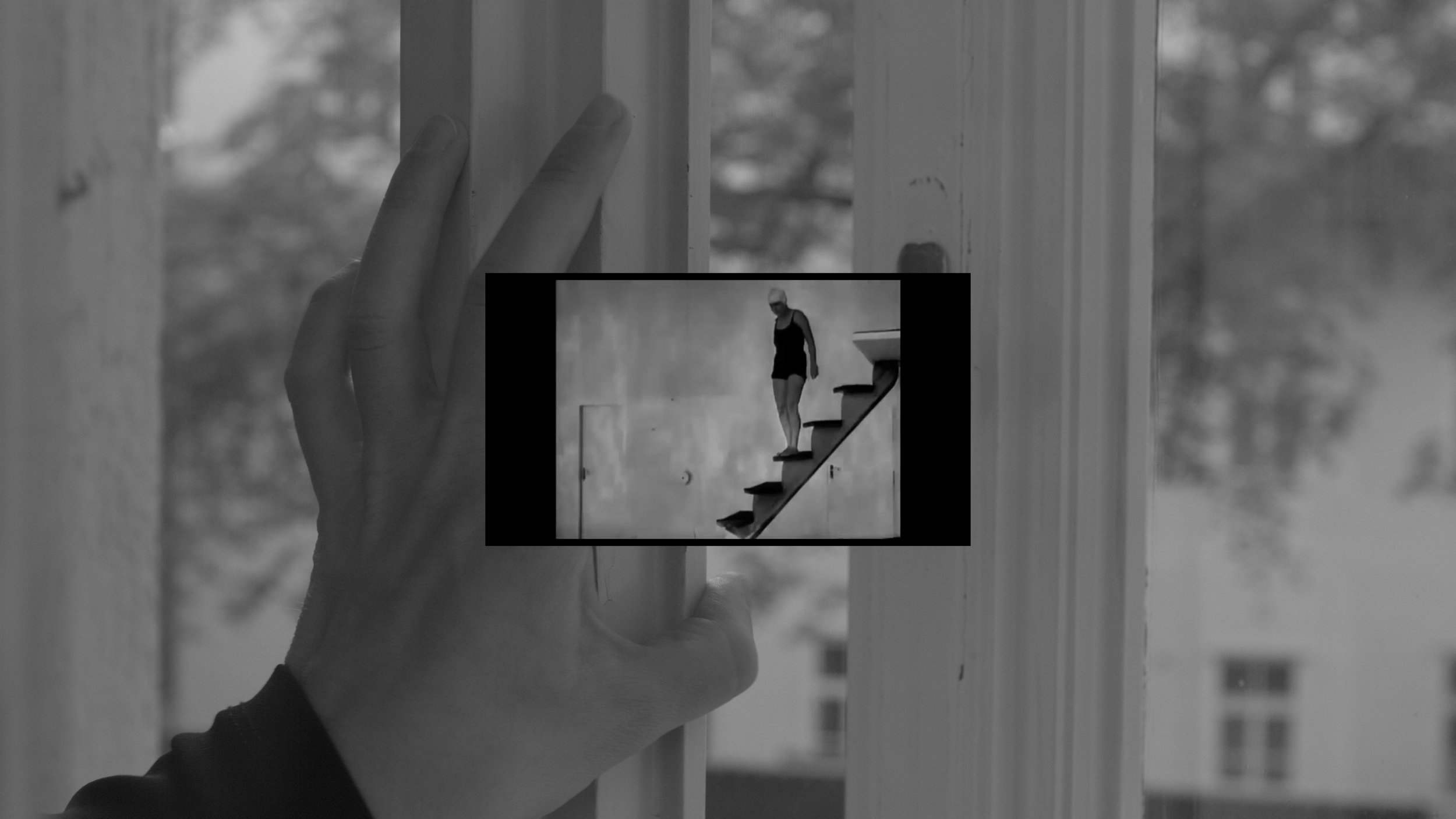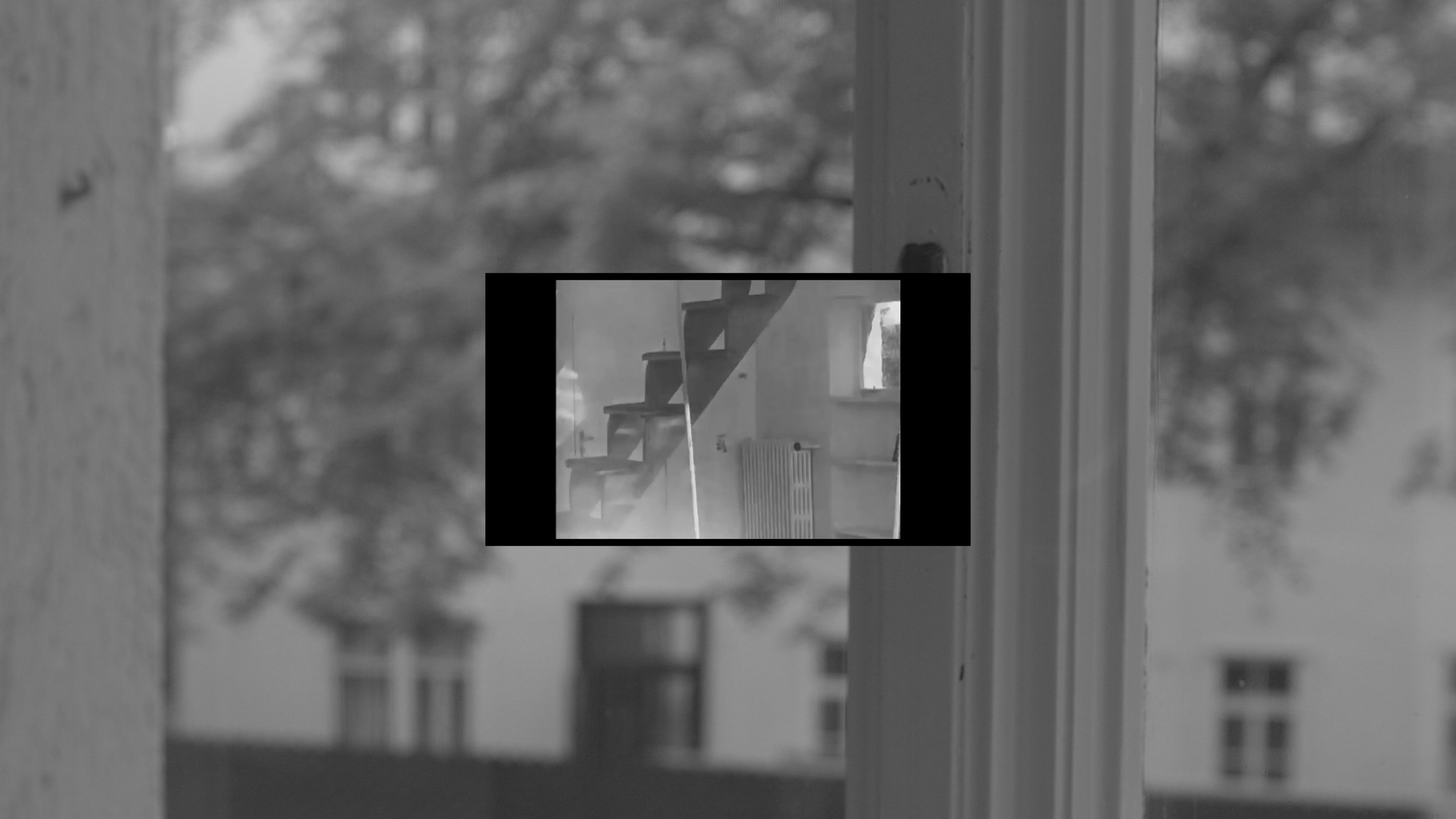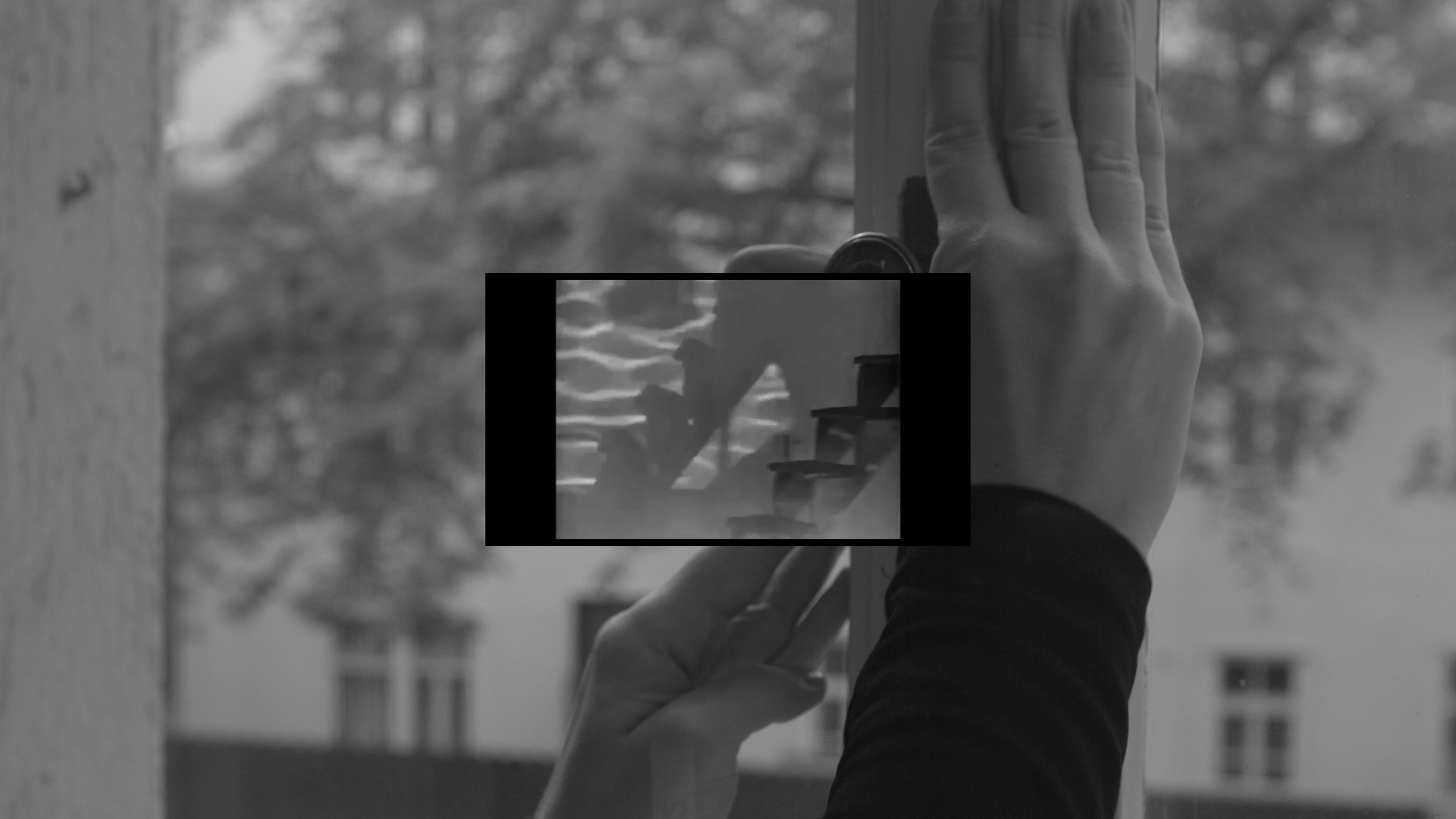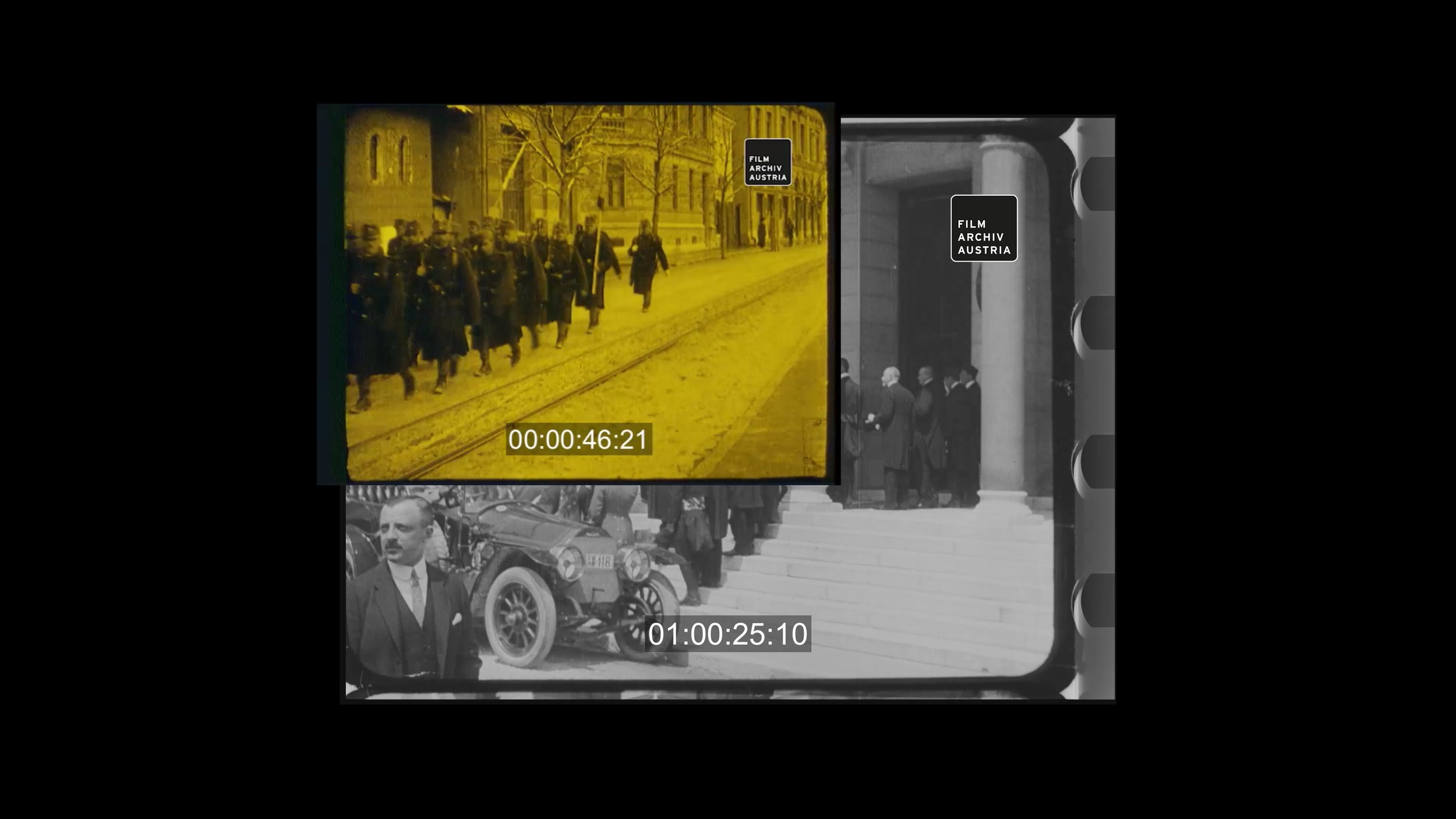FREUD FILM, 2017/2021
Video, color and sound, 16:9, 15 min 23 sec; cement tiles; 3 vitrines with a selection of Zenit issues, reprint edition by Ranko Horetsky, 2008
In Freud Film (2017/2021), sequences filmed by the artist* during a walk through the former Sigmund Freud Museum in Vienna serve as a background for various archival film and textual materials in superimposition. Dating back to the beginning of the twentieth century and mainly drawn from the Filmarchiv Austria [Austrian Film Archive], the found footage depicts busy streets in Sarajevo, the march of an infantry regiment, the announcement of the assassination of the Archduke of Austria, and portraits of individuals such as a “Turkish beggar” and a group of “Jewish tinsmiths”—all from the perspective of the monarchy. These scenes insert the political history of World War I into the inner space of psychoanalysis, uncovering the repressed role of ethnographic exploration, such as these prejudiced representations of Bosnia, in the creation and development of the “collective unconscious” according to psychoanalytic theory. Subtly arranged by the artist*, the montage of film clips seems to outline the contours of the construction of a (Western) European identity versus an exoticized “Oriental” one. While the work’s wider frame follows the official representation of Freud’s universe, lingering on ancient objects from his collection, the superimposed shots—almost obliterating the images behind them—seem to contradict this story and bring to the fore the unconscious of psychoanalysis itself: racial and patriarchal biases. The third layer in Freud Film consists of excerpts from Man Ray’s Surrealist film Les Mystères du Château de Dé [The Mysteries of the Château of Dice] (1929) as well as overlays taken from the avant-garde magazine Zenit, a Yugoslav journal published in the 1920s—some spreads of which are also displayed in three vitrines nearby. Through these references, this section of the film examines the implementation of the unconscious in various historical avant-garde movements.
Text by Anne Faucheret

